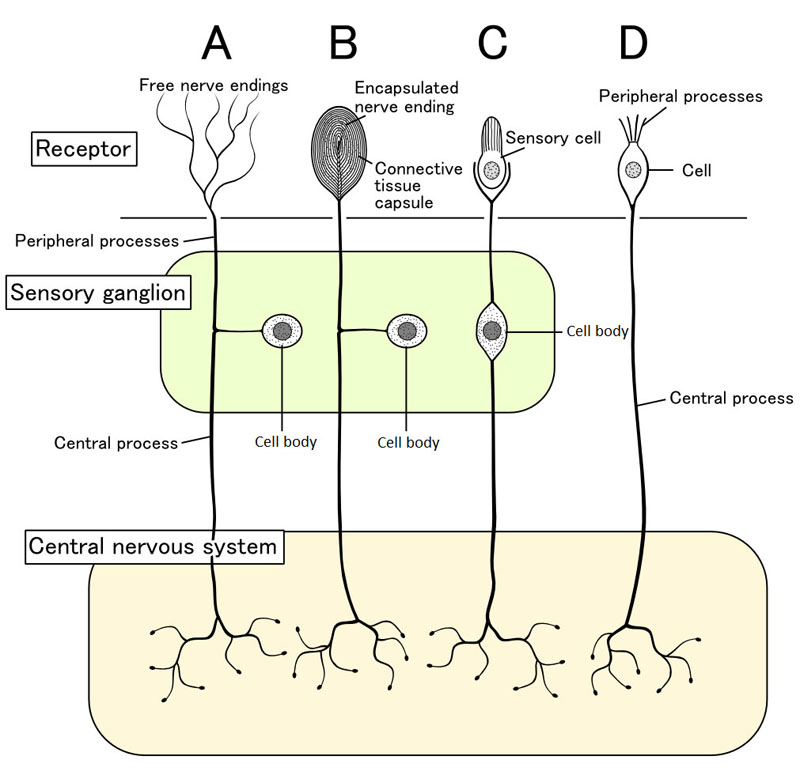Sensation and Perception
Sensation
- Sensation is the function of the low-level biochemical and neurological events that begin with the impinging of a stimulus upon the receptor cells of a sensory organ.
- Transduction refers to stimulus alerting events wherein a physical stimulus is converted into an action potential, which is transmitted along axons towards the central nervous system where it is integrated.
- A sensory receptor is a sensory nerve ending that responds to a stimulus in the internal or external environment of an organism through initiation of sensory transduction by creating graded potentials or action potentials in the same cell or in an adjacent one.
- A ganglion is a nerve cell cluster or a group of nerve cell bodies located in the peripheral nervous system.
- Projection areas are areas in the four lobes (frontal, parietal, temporal, occipital) of the brain where sensory processing occurs.
- Gustav Fechner is credited with demonstrating the non-linear relationship between psychological sensation and the physical intensity of a stimulus.
- Absolute threshold is the weakest stimulus that an organism can detect. Unless otherwise indicated, it is usually defined as the weakest stimulus that can be detected half the time.
- A liminal point is a threshold of a physiological or psychological response.
- Subliminal stimuli are any sensory stimuli below an individual's threshold for conscious perception.
- In the branch of experimental psychology focused on sensation and perception, a just-noticeable difference is the amount something must be changed in order for a difference to be noticeable, detectable at least half the time.
- Weber's law states that the change in a stimulus that will be just noticeable is a constant ratio of the original stimulus.
- Response bias is a general term for a wide range of cognitive biases that influence the responses of participants away from an accurate or truthful response. These biases are most prevalent in the types of studies and research that involve participant self-report.
- Cross-modal plasticity is the adaptive reorganization of neurons to integrate the function of two or more sensory systems, often occurring after sensory deprivation due to disease or brain damage.
- Signal detection theory is a means to quantify the ability to discern between information-bearing patterns of stimuli and random patterns that distract from the information (called noise, consisting of background stimuli and random activity of the nervous system).
- To apply signal detection theory to a data set where stimuli were either present or absent, and the observer categorized each trial as having the stimulus present or absent, the trials are sorted into one of four categories: hits, misses, false alarms, and correct rejections.
- In methods for measuring the threshold of hearing, some procedures use a series of trials, with each trial using single-interval yes-no paradigm. When the interval does not contain a stimulus, it is called a catch trial.
